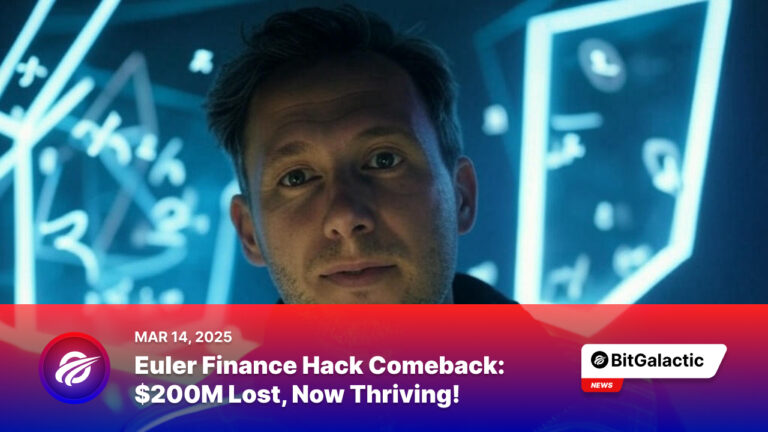Euler Finance Hack Comeback: $200M Lost, Now Thriving!
Hey, BitGalactic crew! Imagine losing $200 million in a single morning—your entire crypto protocol drained by a hacker. Sounds like game over, right? Well, not for Euler Finance. Two years after a brutal DeFi hack, they’re back, stronger than ever, with deposits hitting an all-time high. I’ve been in crypto for a decade, and this comeback? It’s wild. Stick around—let’s unpack this rollercoaster and what it means for DeFi in 2025!
Alright, let’s dive in. Back in March 2023, Euler Finance—a decentralized lending platform—got hit hard. A hacker exploited a tiny flaw in their code, siphoning off $197 million in assets. This wasn’t some rookie mistake either; the bug came from a fix they’d audited months earlier. In DeFi, where transactions are final and code is open for all to see, this is like leaving your front door unlocked in a warzone.
Here’s the crazy part: unlike most protocols that fade away after a hack, Euler fought back. The team, led by CEO Michael Bentley, tracked the hacker—a 20-year-old from Argentina who later bragged about it. After three chaotic weeks, they recovered all the stolen funds—$240 million, actually, thanks to Ether’s price pump during that time. That’s a 20% bonus on a disaster!
Fast forward to today, March 2025. Euler’s deposits just hit $387 million—$693 million if you count borrowed coins. That’s insane growth. In the last month alone, they’ve outpaced 97 of the top 100 DeFi protocols. I pulled some data from Dune Analytics, and lending platforms like Aave still dominate with $17 billion in deposits, but Euler’s 6% spike last week—while markets tanked over U.S. recession fears—shows resilience most projects can only dream of.
From my 10 years in this space, I’ll tell you: this isn’t just luck. Euler scrapped their old system post-hack and built a modular v2 from scratch. Think of it like a Lego kit for developers—flexible, secure, and audited 45 times by 13 firms. They turned a catastrophe into a glow-up.
Now, let’s put this in context. DeFi hacks aren’t new. Remember Poly Network in 2021? They lost $600 million, but the hacker returned it—sounds familiar, right? Or take the 2016 DAO hack on Ethereum—$50 million gone, and it sparked a chain split. Euler’s story echoes these, but with a twist. Most recoveries rely on hackers playing nice or community pressure. Euler’s team actively negotiated, and their pivot to v2 shows they learned the hard way: in DeFi, you either adapt or die.
What sets Euler apart is the scale of their bounce-back. Poly Network faded into obscurity; Euler’s climbing the charts. It’s like watching a boxer get knocked out, then win the title belt two rounds later.
So, what’s next? With $387 million locked and a market still shaky from recession vibes, Euler’s modular approach could shake up DeFi lending. Aave’s a giant, sure, but smaller players like Euler might carve out niches for high-risk or stablecoin traders. My take? If they keep security tight—and avoid another ‘whoops’ moment—they could hit $1 billion in deposits by 2026.
But I want your thoughts: Can Euler sustain this momentum, or is DeFi just too brutal for underdogs? Drop a comment—I read every one!
If you loved this deep dive, hit that subscribe button! We’re your go-to crew at BitGalactic for crypto breakdowns, market trends, and the wild stories shaping this space. Ring the bell so you don’t miss our next video—trust me, 2025’s heating up. See you in the comments, fam!
Share this post


